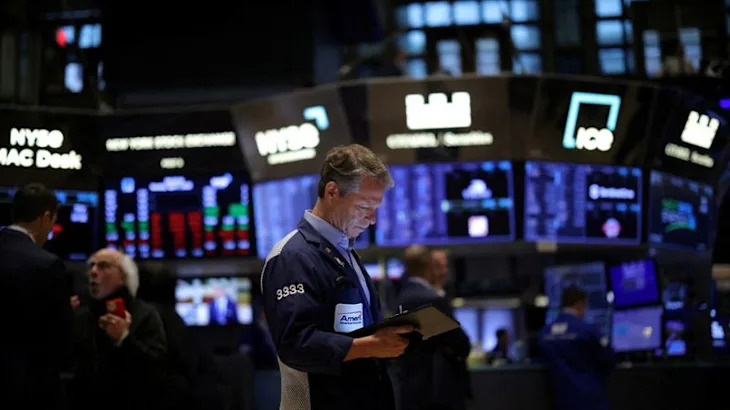(Bloomberg) -- Treasury yields resumed their rise as investors looked ahead to crucial consumer price data on Wednesday, which could further erode confidence in Federal Reserve interest-rate cuts over the next year.
Two-year yields — more closely tied to the Fed’s decisions than longer-maturity debt — reached the highest level since July, and three- to 30-year yields rose at least 10 basis points. While the move in yields partly reflects price declines for Treasury futures on Monday when the cash market was closed for Veterans Day, it gathered pace during the US trading day.
Among the drivers was Tuesday’s slate of corporate bond issuances, on pace to be the biggest in two months with at least 13 offerings. The selloff defied signs that record-high levels for US equity benchmarks are stoking demand for bonds. Case in point: Record inflows at exchange-traded funds that aim to benefit from bond-market gains last week.
“The bond market is set up for a stronger CPI number,” said David Rogal, fixed-income portfolio manager at BlackRock Inc., referring to the October consumer price index data. “Even with certainty on the election result, there’s still a fair amount of uncertainty on policy and how that impacts markets.”
In Rogal’s view, “the front end of the curve now has made a substantial adjustment to the point where I do think it is very close to fair value.”
Last week’s bond-market selloff — unleashed by Donald Trump winning the US presidential election — sent yields across maturities to their highest levels since July. The absence of any delay in determining the result sapped haven demand, while bonds also fell in anticipation that his administration’s policies will drive inflation.
Most tenors remain short of those levels. However, short-dated yields face heightened risk from Wednesday’s CPI data, with the potential to shift the odds of a December rate cut in either direction. Swap contracts are pricing in about 14 basis points of easing, or about 55% of a quarter-point rate cut on Dec. 18, down from near full certainty at the start of the month.
The CPI data are expected to show price increases of 0.2% overall and 0.3% excluding food and energy, which could lift the year-over-year rate for the first time in seven months.
“Inflation is not tamed,” Scott Kleinman, co-president at Apollo Global Management Inc., said in a Bloomberg Television interview Tuesday. “We’re going to have to live with a higher rate environment for a lot longer.”
Richmond Fed President Thomas Barkin on Tuesday reiterated the message that Fed Chair Jerome Powell delivered last week after policymakers cut interest rates by a quarter point.
Barkin said he was looking at two scenarios for the economy: As election uncertainty fades, companies could begin investing and hiring again, leaving the Fed to focus on upside inflation risks. Or, companies could respond to margin compression from weaker pricing power by firing workers, which would elevate employment risks for the Fed.
Investors appear to be responding to “the Fed’s recent comments suggesting that cuts could be more gradual,” interest-rate strategists at TD Securities said in a Tuesday note. Longer-dated yields are unlikely to rise as much under that scenario, they said.
While the election results “have certainly increased the economic uncertainty over the next couple of years, that’s not really something that the Fed can react to on a proactive basis,” said Nate Hyde, portfolio manager at Insight Investment.
Hyde expects inflation and employment conditions to weaken, allowing yields in the two- to five-year part of the bond market to decline.
(Adds executive’s comment ninth paragraph, updates yield levels.)




